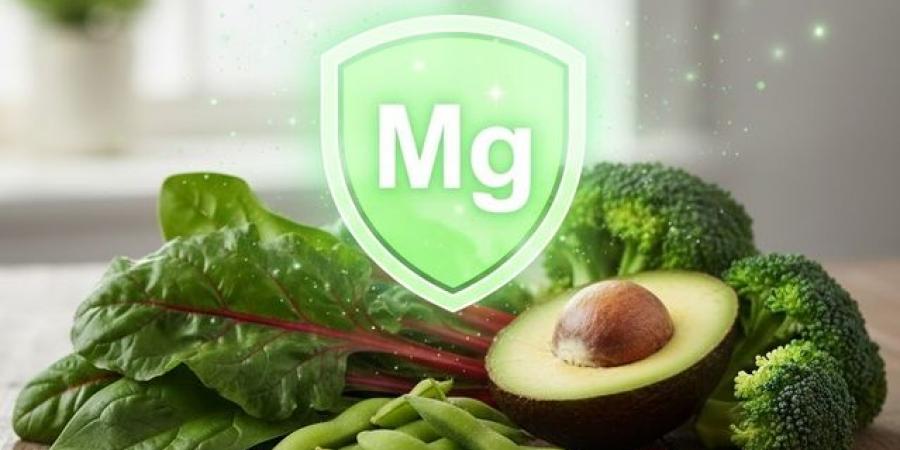نعرض لكم زوارنا أهم وأحدث الأخبار فى المقال الاتي:
7 Vegetables That Are High in Magnesium - المصدر 24, اليوم الخميس 13 نوفمبر 2025 12:15 مساءً
المصدر 24 - Magnesium is one of the most essential minerals your body needs — yet almost half of adults don’t get enough of it.
This powerful nutrient supports energy production, muscle function, heart health, blood sugar control, and even better sleep.
Luckily, you don’t need supplements to get more magnesium.
Many everyday vegetables are naturally rich in this vital mineral, making it easy to boost your intake through simple meals and snacks.
Here are seven vegetables that are especially high in magnesium — and how adding them to your diet can significantly improve your overall health.
1. Spinach
Spinach is one of the highest magnesium-rich vegetables you can eat — a true nutritional powerhouse.
Why it’s healthy:
Contains an impressive amount of magnesium
High in iron, vitamin K, vitamin A, and antioxidants
Low in calories and rich in fiber
Health benefits:
Supports healthy muscle and nerve function
Helps regulate blood pressure
Improves energy levels
Protects eyesight
How to eat it:
Add fresh spinach to salads
Blend into smoothies
Sauté with garlic
Add to omelets or pasta dishes
Pro tip:
Lightly steaming spinach preserves more magnesium than boiling it.
2. Swiss Chard
Swiss chard is another leafy green loaded with magnesium and other essential minerals.
Why it’s healthy:
Rich in magnesium, potassium, and calcium
Contains antioxidants like beta-carotene and lutein
Supports bone and cardiovascular health
Health benefits:
Helps maintain strong muscles
Balances blood pressure
Reduces inflammation
Supports healthy digestion
How to eat it:
Use the leaves in wraps or sandwiches
Sauté with olive oil and lemon
Add to stews or stir-fries
Pro tip:
Chard stems are edible too — chop and cook them a few minutes longer than the leaves.
3. Beet Greens
Most people throw away beet greens without knowing they’re more nutritious than the beetroot itself.
Why they’re healthy:
Rich in magnesium, calcium, and iron
High in vitamin C and antioxidants
Excellent source of fiber
Health benefits:
Supports blood circulation
Strengthens bones
Improves digestion
Helps detoxify the body
How to eat them:
Add to salads for a fresh, earthy taste
Sauté with onions and olive oil
Mix into soups or grain bowls
Pro tip:
Choose fresh beet greens — they wilt quickly, so cook them within 1–2 days.
4. Edamame (Young Soybeans)
Edamame is a vegetable-like legume that’s extremely nutrient-dense and rich in plant protein.
Why it’s healthy:
High in magnesium, iron, and plant-based protein
Rich in isoflavones (antioxidants linked to heart health)
Low in calories, high in fiber
Health benefits:
Supports muscle recovery
Improves heart health
Helps regulate blood sugar
Boosts metabolism
How to eat it:
Enjoy boiled edamame with sea salt
Add shelled edamame to salads
Blend into hummus for extra protein
Pro tip:
Edamame is one of the easiest snacks for quick magnesium — one cup gives a huge boost.
5. Okra
Okra is a popular vegetable in Middle Eastern, African, and South Asian cuisines — and it’s packed with magnesium.
Why it’s healthy:
Rich in magnesium and vitamin C
Contains antioxidants and soluble fiber
Helps maintain healthy blood sugar levels
Health benefits:
Supports digestive health
Reduces cholesterol
Strengthens immunity
Protects the heart
How to eat it:
Add to stews or soups
Roast in the oven with spices
Stir-fry with tomatoes and garlic
Pro tip:
To reduce okra’s “slimy” texture, cook it at high heat or combine it with acidic ingredients like tomatoes or lemon.
6. Green Beans
Green beans are a simple, widely available vegetable that provides a decent amount of magnesium.
Why they’re healthy:
Rich in magnesium and manganese
Low in calories
High in fiber and antioxidants
Health benefits:
Supports metabolism
Improves bone strength
Helps regulate blood sugar
Reduces inflammation
How to eat them:
Steam or sauté with butter and garlic
Add to salads for crunch
Mix into casseroles or pasta dishes
Pro tip:
Choose bright, firm green beans — they’re fresher and contain more nutrients.
7. Artichokes
Artichokes may not be the most common vegetable in home kitchens, but they offer exceptional nutritional value.
Why they’re healthy:
Rich in magnesium, potassium, and fiber
Contains antioxidants that support liver health
Excellent for digestive health
Health benefits:
Reduces bad cholesterol
Supports liver detoxification
Improves digestion and gut bacteria
Enhances heart health
How to eat them:
Steam whole and dip leaves in olive oil
Add marinated artichokes to salads
Mix into pasta dishes
Pro tip:
Artichokes are one of the highest antioxidant vegetables — perfect for boosting overall health.
Bonus: Why Magnesium Matters
Magnesium supports more than 300 biochemical processes in the body.
Getting enough can help with:
Better sleep
Lower stress levels
Improved blood sugar control
Muscle recovery
Stronger bones
Better circulation
Vegetables are one of the cleanest, safest ways to boost magnesium naturally.









0 تعليق